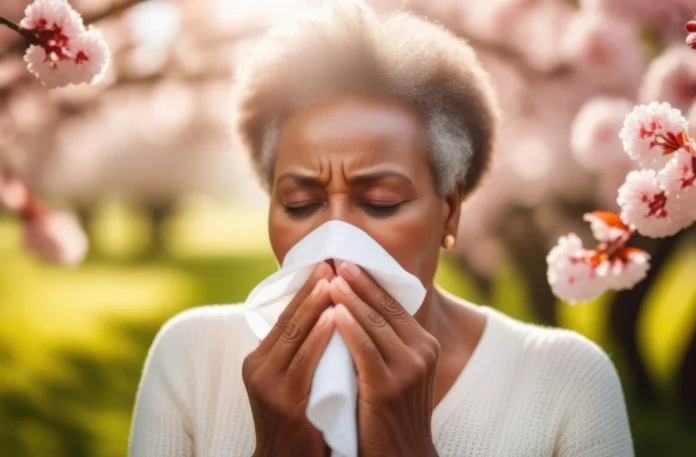Springtime signals renewal, growth, and—if you’re among the millions—an onslaught of sneezing, itchy eyes, and runny noses. If you live in the Southeastern United States, you might notice your car coated in a fine yellow dust, your outdoor furniture blanketed with pollen, and every car wash overwhelmed with customers. The culprit? Pollen—the plant kingdom’s male reproductive material, launched into the air in astonishing quantities.
But why does pollen seem worse than ever before? And what role does the wind play in this seasonal misery? Let’s dive into the natural and climatic factors driving the rise of pollen storms and the intensification of allergies.
Nature’s Reproductive Gamble: How Trees Spread Their Pollen
Plants rely on pollen to reproduce, but unlike animals, they can’t move around to find a mate. Trees, in particular, have two main strategies to spread their pollen:
1. Animal Pollination:
Some trees attract insects like bees and butterflies by producing showy flowers and sweet nectar. These animal pollinators carry pollen from one plant to another. This method is targeted, efficient, and requires pollen grains to be relatively heavy and sticky so they cling to the pollinators’ bodies.
2. Wind Pollination:
Other trees opt for a “budget” pollination strategy: they let the wind do the work. This wind-borne pollen is lightweight, powdery, and produced in massive amounts. Because wind is an inefficient transporter—most pollen grains never land on the right plant—trees must compensate by flooding the air with tiny pollen particles.
Why Wind-Pollinated Trees Make Allergies Worse
The very nature of wind pollination leads to greater exposure for allergy sufferers. Unlike insect-pollinated plants, wind-pollinated trees release pollen that floats freely, easily entering your eyes, nose, and lungs. This airborne pollen doesn’t just irritate; for many, it triggers immune responses that cause classic allergy symptoms.
Even people without pollen allergies can experience discomfort when enough particles fill the air. The tiny pollen grains penetrate window screens, linger longer outdoors on breezy days, and travel further than ever before.
Climate Change: Turning Up the Pollen Volume
Studies over the past three decades reveal a worrying trend: pollen seasons have become longer and more intense. Warmer temperatures and increased carbon dioxide levels stimulate trees to produce more pollen, and earlier in the year.
- Between 1990 and 2018, pollen seasons across North America have lengthened by approximately 20 days.
- Pollen concentrations have increased by around 21% during the same period.
These changes mean that the window for suffering from seasonal allergies is expanding, and the amount of pollen your immune system must contend with is climbing.
The Southeast’s Perfect Storm of Allergies
The Southeastern U.S., where stormy weather and strong winds have become more frequent and severe, faces a unique double whammy.
- More frequent windstorms—including tornadoes and thunderstorms—stir up and disperse pollen far and wide.
- These storm winds keep pollen airborne longer and spread it across broader regions.
- Storm activity can fragment pollen grains into smaller particles, which penetrate deeper into the respiratory tract, causing more severe allergic reactions.
For allergy sufferers, this means that windy, stormy days often bring a spike in symptoms—worsening the misery of spring.
Understanding the “Pollen Storm”
The convergence of longer pollen seasons, increased pollen production, and stronger winds has created a phenomenon some call the “pollen storm.” It’s an invisible cloud of allergens swirling around, waiting to trigger sneezes, wheezes, and watery eyes.
This is not just an inconvenience but a real public health issue, as rising allergy prevalence affects quality of life and can exacerbate conditions like asthma.
What Can You Do?
- Stay informed: Monitor local pollen counts and weather reports to plan outdoor activities.
- Minimize exposure: Keep windows closed on windy or high-pollen days and use air purifiers indoors.
- Consult healthcare providers: Allergy medications and immunotherapy can help manage symptoms.
- Support green initiatives: Reducing emissions and slowing climate change can eventually ease the intensity and duration of pollen seasons.
Final Thoughts
The interplay of natural plant biology and our changing climate means pollen is here to stay—and so are the sneezes. Understanding why pollen storms happen, and how wind and weather amplify their effects, helps us prepare and protect ourselves better.
As researchers continue to study these dynamics, staying aware and proactive is the best way to navigate the season and breathe a little easier.
Christine Cairns Fortuin, Ph.D., assistant professor of forestry at Mississippi State University, specializes in pollination ecology and the impacts of severe wind events. This article originally appeared in The Conversation, an independent source of expert insights.
Related Reading:
- Why Antibiotic Overuse May Increase Allergies
- Innovative Ways to Reduce Allergies and Asthma
The cycle of spring blooms is a beautiful, vital part of life on Earth—but it’s also a challenge for millions with allergies. With knowledge, preparation, and care, you can weather the pollen storm and enjoy the season more comfortably.

